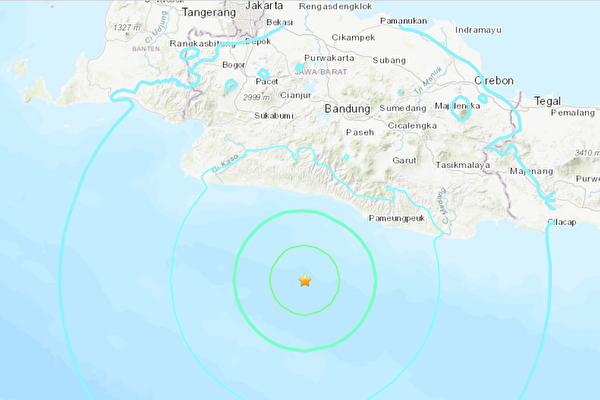Recently, multiple earthquakes have struck across Asia. In Taiwan, after the devastating magnitude 6.3 earthquake that resulted in 17 fatalities, Hualien has experienced several late-night tremors. On Saturday, April 27th, Hualien was hit by three consecutive tremors, followed by a 6.9 magnitude earthquake in the Ogasawara Islands of Japan, and then a 6.5 magnitude quake off the coast of Java, Indonesia.
The earthquake near Banjar in West Java occurred at 11:29 p.m. local time on Saturday.
According to Indonesia’s Meteorology, Climatology, and Geophysics Agency (BMKG), a 6.5 magnitude earthquake struck off the coast of Java on Saturday. The German Research Centre for Geosciences reported a 6.3 magnitude quake on Java on Saturday, with a depth of 65 kilometers (40.39 miles).
The United States Geological Survey recorded the earthquake as a 6.1 magnitude, with a depth of 68.3 kilometers (42 miles). Jakarta and nearby Bandung felt the tremor, prompting people to evacuate buildings.
Iman Krisnawan, a 47-year-old resident of Bandung, told AFP, “I shouted at my wife and children to leave the house.”
“Usually earthquakes last around 5 seconds, but this time it lasted 10-15 seconds,” he said.
Preliminary earthquake data suggests that many in the epicenter area felt the quake. Aside from objects falling off shelves and shattered windows, no significant damage has been reported.
BMKG stated that no tsunami warning was issued.
On the same day, the Japan Meteorological Agency reported an earthquake in the western Pacific Ocean near the Ogasawara Islands with a preliminary estimate of 6.9 magnitude. The quake did not pose a tsunami threat but was felt in multiple prefectures near Tokyo. It was a deep earthquake with no reports of injuries or major damage.
The Central Weather Bureau of Taiwan reported that Hualien County in eastern Taiwan experienced three consecutive tremors on Saturday, with the largest registering at a Richter scale of 6.1, felt across the island with no reports of damages. The agency stated that these tremors are still aftershocks of the earlier magnitude 6.3 quake. Due to the large scale of the earlier tremor, the seismic sequence is undergoing stress adjustments.
Indonesia, as an archipelagic nation located on the Pacific Ring of Fire, experiences frequent seismic activities. This region is known for intense earthquake occurrences extending from Japan through Southeast Asia across the Pacific Basin.
In January 2021, a 6.2 magnitude earthquake hit Sulawesi, Indonesia, causing over 100 deaths and leaving thousands homeless. In September 2018, a 7.5 magnitude quake struck Palu, Sulawesi, followed by a tsunami, resulting in over 2,200 casualties. In December 2004, a 9.1 magnitude earthquake off the coast of Aceh Province, Indonesia triggered a devastating tsunami, claiming over 170,000 lives in Indonesia alone, with a high number of casualties due to the influx of tourists at that time.
Japan, also situated on the Pacific Ring of Fire, experienced a catastrophic 9.0 magnitude earthquake and subsequent tsunami along its northeastern coast in March 2011, causing over 20,000 fatalities.
Taiwan, located within the Pacific Ring of Fire, encountered a significant earthquake measuring 7.2 on April 3rd around 7:58 a.m. The epicenter was 25.0 kilometers south-southeast of Hualien County Government, in the eastern waters of Taiwan, with a depth of 15.5 kilometers. The quake was strongly felt across Taiwan and marked the most powerful since the devastating 921 earthquake, resulting in casualties with Hualien bearing the brunt, with at least 17 reported deaths.

